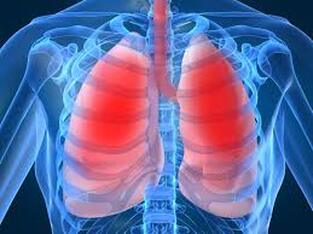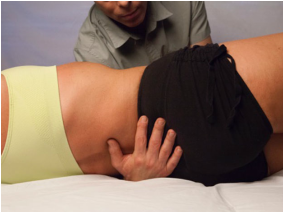 Breathing and feeling our feelings is intimately connected. As a teacher and student of Chi Nei Tsang I have become acutely aware of this connection in my own life. As a practitioner of Chi Nei Tsang, I see this connection or lack off it in my students/clients. Most of us are unaware of this connection, but as you reflect back to times of emotional pain or joy you will see how powerful the breath is during an emotional experience. We have sayings that illustrate this connection...upon the end of a difficult or stressful situation we often say. "finally, I can breath again!", or we advise someone, to take some time off to "catch their breath." When we are in the throws of anger our breath becomes rapid and full. When we are anxious our breath becomes shallow and is like panting. When we are deeply engaged in concentration we may actually be holding our breath. We also tend to hold our breath when we are in a suppressive and/or abusive relationship, toxic work situation, or are facing a fearful event. Breath is life. When we connect to breath we are able to experience life more fully. Unfortunately what I see in the treatment room shows a story of disconnection to breath. An initial Chi Nei Tsang sessions often begin with the practitioner connecting energetically with the student. We do this by placing hands on the sides of the neck and the back of the skull in order to read the pulses of the student. Additionally, we are watching the breathing pattern of that individual, who has been asked to breath in their normal breathing pattern. In most cases what is observable is a short, shallow breath using only a minimal amount of energy and focused on the stomach only or only in the chest. Why is this a problem? The natural cycle of breath is a one stroke movement of the diaphragm. The diaphragm drops with the in breath which in turn moves the stomach up and out, the chest follows next, rising to expand the lungs all the way to the top. Your lungs fill the internal thoracic cavity from the bottom of the rib cage to the space just below your clavicle bones. When you breath fully the chest expands and the ribs follow suit. It is the rhythmic movement of the breath that syncs us to our emotional states, allowing us to fully feel our emotional experiences. When we do not or are not able to fully experience our emotional states we become disconnected from self. Further, we are now unable to process the energy of those emotions and clear the chi, or the energetic quality of those experiences. This energy then becomes stuck in the system. A pattern is set and we begin to suppress the breath as a highly effective tool to keep us from feelings what we are not equipped to handle in the moment. The basic patterns I see when practicing with students is an inability to draw a full breath, ie resisting feelings. I also commonly see folks who are unable to fully release the breath and the stagnant air from the lung, ie inability to let go and flow with life, holding onto experiences, unable to fully process and release. The problem with this pattern is the stuck'ness that it creates. This stuck place also keeps us from maturing out of our strong emotional reactions. In essence we are unable to digest and process these emotional states and release them as no longer useful to us. We become "emotionally constipated"! This phenomenon of blocked emotions tends to wreck havoc with our physical body whose functions become impeded by the blocked chi. Unable to be released, something has to give! We see the development of psychosomatic illness, allergies, leaky gut, joint complaints, constipation, IBS, ulcers, GERD, asthma. Eventually unhealed congested emotional blockages can develop in life threatening illness, cancer, heart attacks, autoimmune disorders such as Chrohn's, lupus and a myriad of other chronic conditions. The good news...all that can be changed and healed by allowing a little at a time each day to connect with your breath. There are MANY ways to accomplish this from simply setting aside a few moments to consciously connect with your breath and expanding it gently. Practicing yoga, chi kung, tai chi, martial arts. All of these modalities are meditative practices involving exercise and breath work. Hiking, running, playing sports also connects with breath and relieves stress. Dancing, will get your breath moving and it's fun! There is no need to fear our emotions. There may have been a time in your life that your emotional experiences seemed to big to deal with, but as you learn to connect with the alchemy of the breath you will find your balance. You will find that a little attention paid to noticing what you are feeling will initiate a gentle unwinding of the emotional tension. You will open to the joy of your being as you create a stronger sense of being grounded which will empower you to release all that does not serve you! Learn more about releasing what no longer serves you...Heart - Zero Point Process. During the Month of February each year Bridge to health offers discounted Zero Point Process Sessions as an opportunity to begin to release what isn't working for you!  Massage therapist, David Goldeen, specializes in Myofascial Release Therapy. In his practice he encounters blocked breathing patterns as well. He observes..."I see people in my treatment room that do not breath deeply or fully. This tendency is commonly caused by unconsciously holding their breath when they are scared, anxious, nervous or excited. The ongoing response pattern creates restriction in the muscles between their ribs (intercostal muscles) and their diaphragm. Eventually the restriction in this area will produce symptoms as decrease flexibility begins tp produce profound restriction of movement". He goes onto to offer his clients and you, my readers an easily undertaken "homework" assignment! Find a quiet time at least once a day and take 20 long slow breaths. This assignment develops awareness of the breath, they begin to notice when they are holding their breath. The new found awareness empowers them to create a shift and breath with more fully. Learn more about Myofascial Release and David Goldeen, LMT, BCTMB. Mr. Goldeen treats patients and teaches Myofascial Release exclusively. He has been practice massage therapy for over 30 years. The Associated Bodywork & Massage Professionals organization has this post which offers further insight to working with breath, Conscious Breathing
0 Comments
Leave a Reply. |
VanessaCertified Wellness Consultant speaks up! Categories
All
Archives
June 2024
|
BRIDGE TO HEALTH
|
Bridge to Health Wellness
Awaken & Evolve Learning Center 7610 East McDonald Drive, Suites E & K Scottsdale, AZ 85250 805-235-8071 |
LinkTree - Find all our links here!
Booking Site - Social - YouTube Schedule Your Learn & Heal Consult Become a client Email: Bridge to Health Wellness |
 RSS Feed
RSS Feed